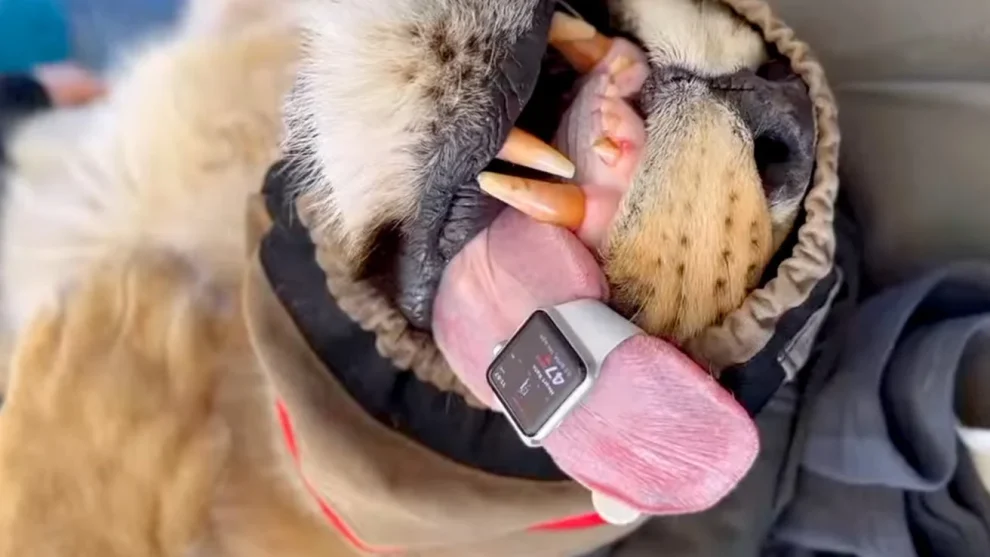The wilds of Africa rarely witness such a sight: a sedated lion, sprawled majestically, with a curious device strapped to its tongue. This isn’t a scene from a surreal wildlife documentary, but a recent viral video showcasing the innovative approach of Dr. Chloe Buiting, a veterinarian determined to revolutionize animal healthcare in remote areas.
The video, captured during a routine lion conservation project, depicts Dr. Buiting using her Apple Watch to monitor the heart rate of the sedated animal. This unconventional technique has sparked a global conversation, highlighting the potential of readily available technology to bridge the gap in wildlife veterinary care.
Beyond the Roar: The Challenges of Wildlife Veterinary Care
Providing veterinary care to wild animals presents a unique set of challenges. Unlike domesticated animals with regular checkups, monitoring the health of wild creatures often requires specialized equipment and expertise, often unavailable in remote locations. Traditional methods can be invasive, stressful for the animals, and even pose safety risks to both humans and wildlife.
Dr. Buiting, who goes by the handle @jungle_doctor on Instagram, is a passionate advocate for improving healthcare access for wild animals. She, along with other wildlife veterinarians, is constantly exploring innovative solutions to overcome these challenges.
Thinking Outside the Cage: The Apple Watch as a Heart Rate Monitor
Enter the Apple Watch. Dr. Buiting, inspired by a colleague, Dr. Fabiola Quesada, discovered a novel way to utilize the readily available technology. By strategically placing the Apple Watch on the lion’s tongue, she was able to leverage the watch’s built-in heart rate sensor to capture vital data. The video showcases the watch displaying the lion’s heart rate in real-time, a crucial metric for veterinarians assessing an animal’s health.
Beyond the Viral Video: Exploring the Potential and Limitations
Dr. Buiting’s resourceful approach has generated immense interest. However, it’s important to understand the context and limitations of this technique.
- Limited Scope: While the Apple Watch provides a basic heart rate reading, it isn’t a substitute for comprehensive veterinary examinations. More advanced diagnostics are often needed for a complete health assessment.
- Species Specificity: The technique might not be universally applicable. Animal anatomy and physiology vary greatly, and the success of using a smartwatch for heart rate monitoring might differ across species.
- Ethical Considerations: Animal welfare remains paramount. This technique should only be employed under veterinary supervision and when traditional methods are impractical or pose greater risks.
Tech Meets Conservation: A Catalyst for Change
Despite the limitations, Dr. Buiting’s ingenuity highlights the potential of readily available technology to revolutionize wildlife veterinary care. Here’s how this approach could pave the way for positive change:
- Accessibility and Cost-Effectiveness: Smartwatches are widely available and relatively affordable compared to specialized veterinary equipment. This makes them a potentially valuable tool for veterinarians working in resource-limited settings.
- Remote Monitoring: The ability to collect basic health data remotely using smartwatches could be particularly useful for monitoring at-risk animals or tracking recovery after relocation or treatment.
- Data Collection and Research: Data collected through such innovative methods can contribute to a wider understanding of animal health and disease patterns in wild populations, leading to improved conservation strategies.
The Future of Wildlife Care: Collaboration and Innovation
Dr. Buiting’s story is an inspiration for a new wave of tech-savvy veterinarians seeking to bridge the gap in wildlife care. Here’s a glimpse into how the future of wildlife veterinary medicine might unfold:
- Tech Development for Animal Use: Technology companies could collaborate with veterinarians to develop specialized apps and devices tailored to animal health monitoring in the wild.
- Standardized Protocols and Training: Creating standardized protocols and training programs for using readily available technology in wildlife settings would ensure ethical and effective application of these methods.
- Global Collaboration: Fostering collaboration between veterinarians, technologists, and conservation organizations can accelerate innovation and knowledge sharing, ultimately leading to better healthcare for wild animals around the world.
From Viral Sensation to Veterinary Revolution?
Dr. Buiting’s innovative use of an Apple Watch has captured the world’s attention and sparked a conversation about the future of wildlife healthcare. While the technique itself might have limitations, it represents a crucial step towards a future where readily available technology empowers veterinarians to better care for wild creatures, even in the most remote corners of the globe. This is a story not just about a lion and a smartwatch, but about the ingenuity and dedication of those who strive to protect the wild at heart.
















Add Comment